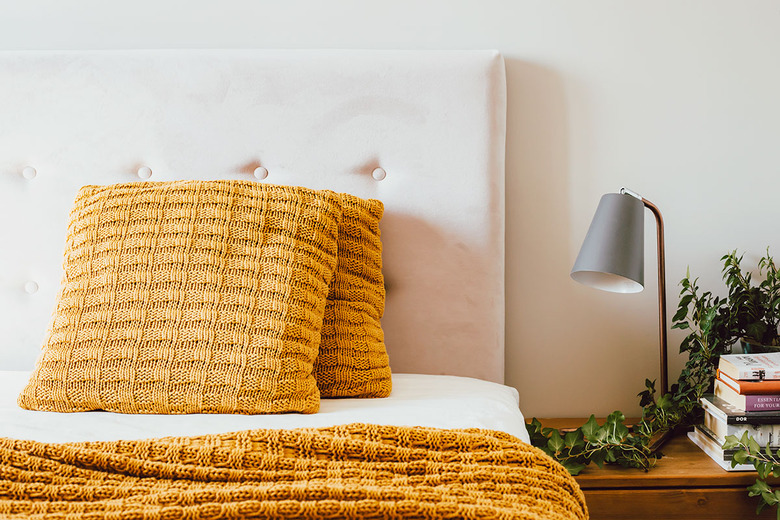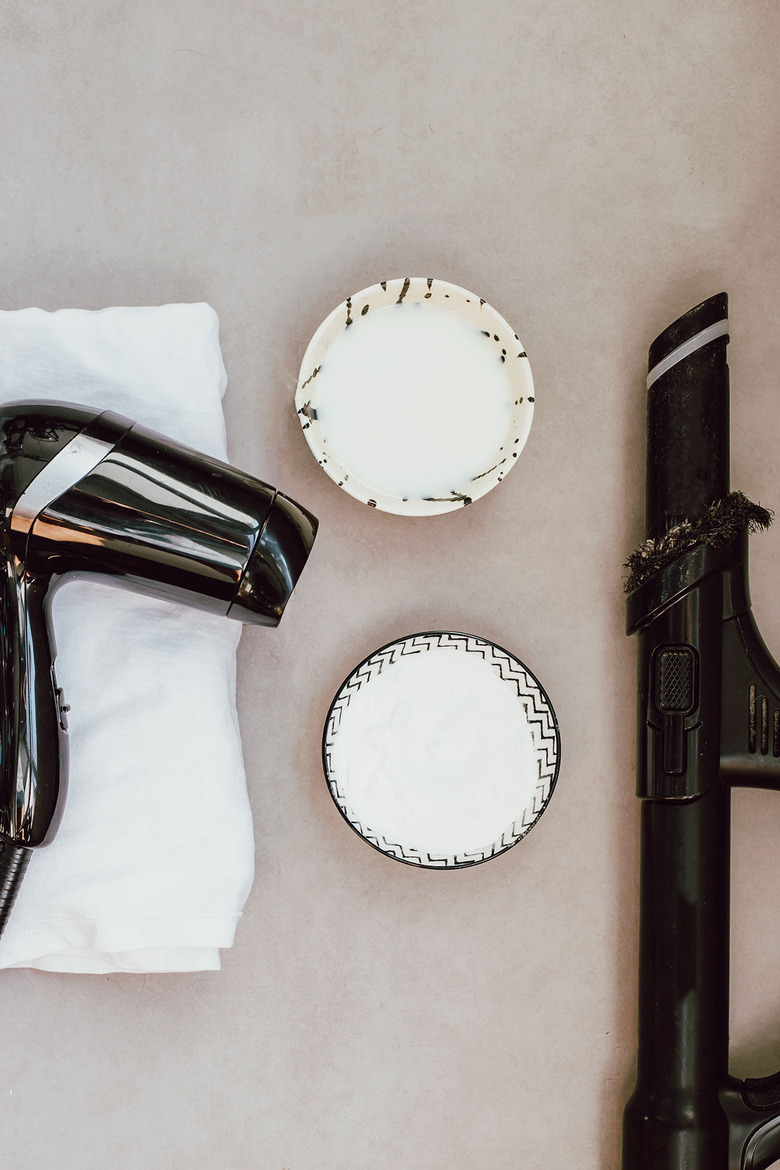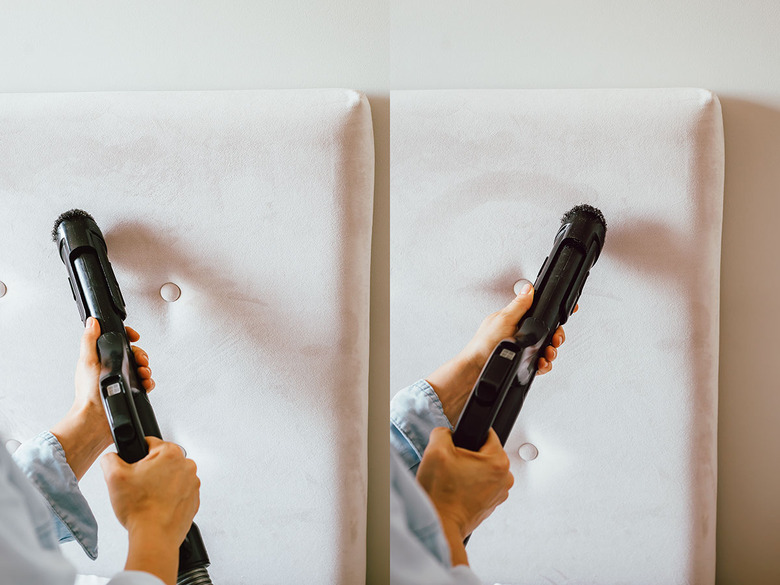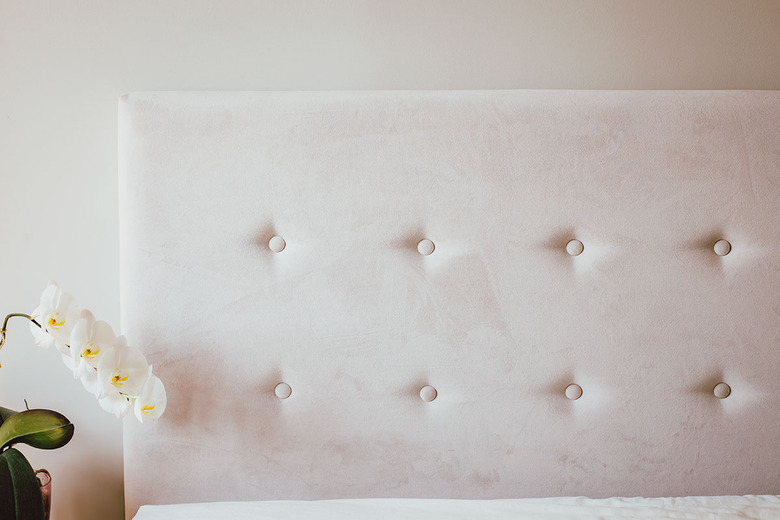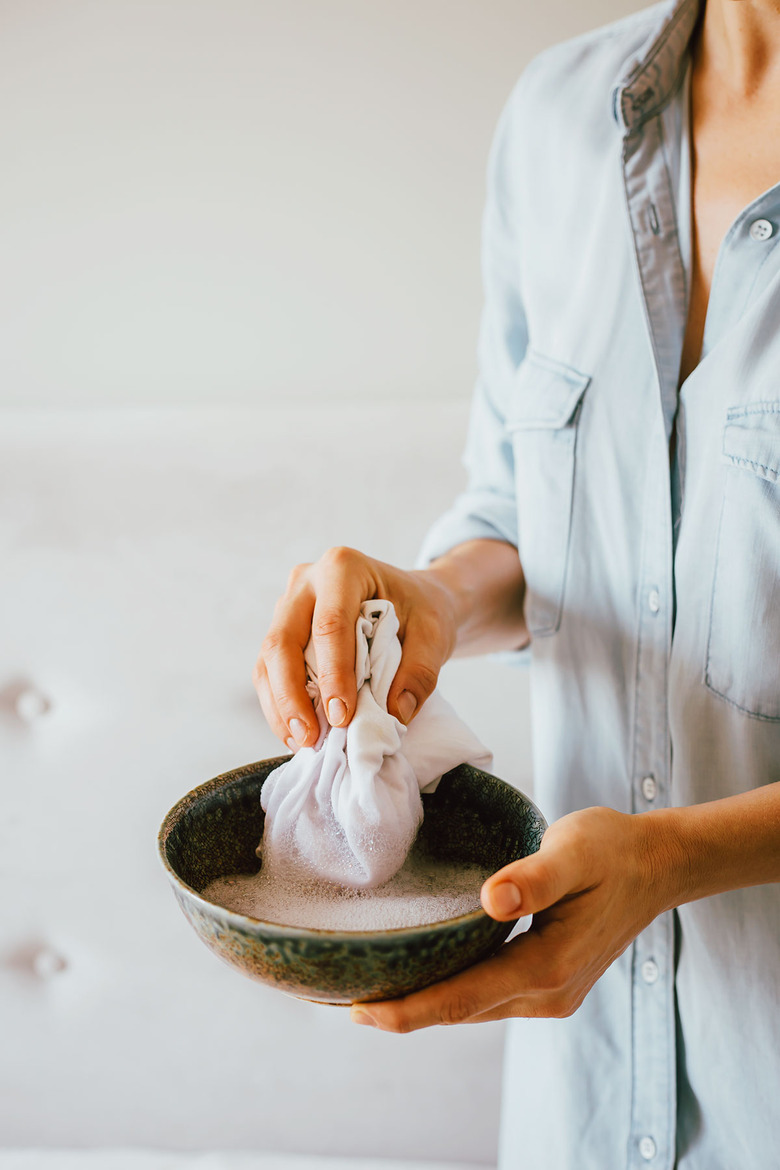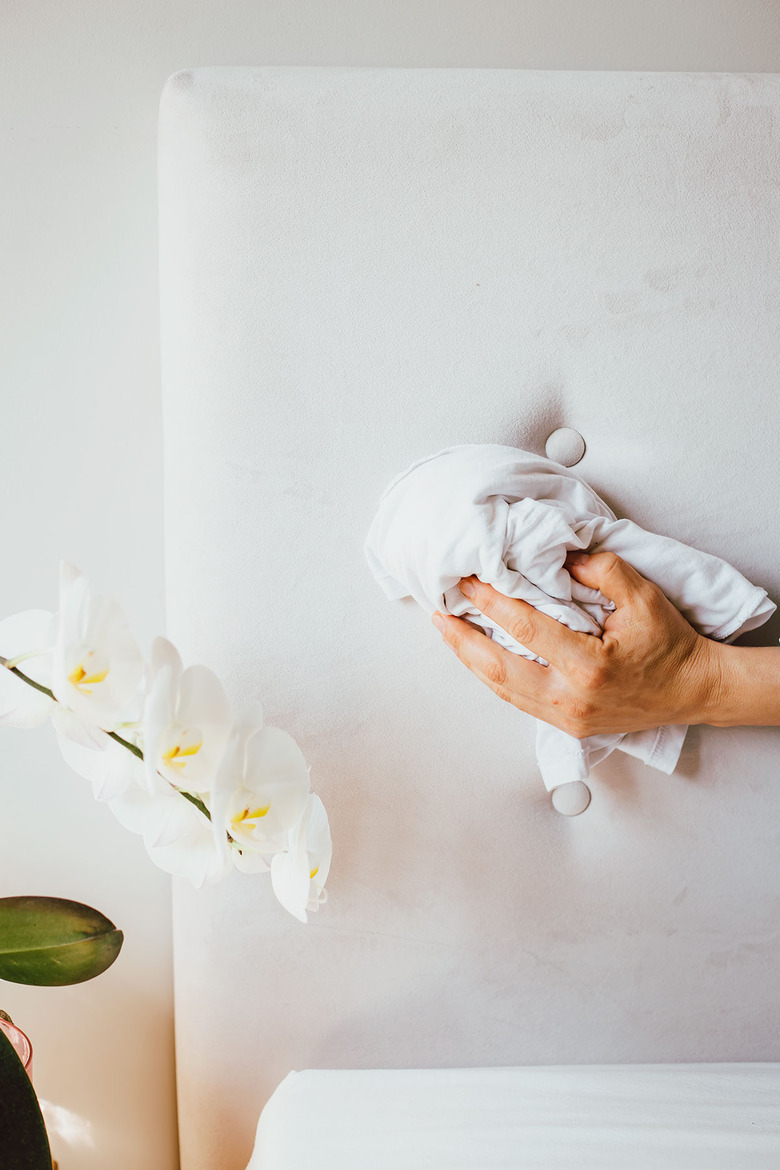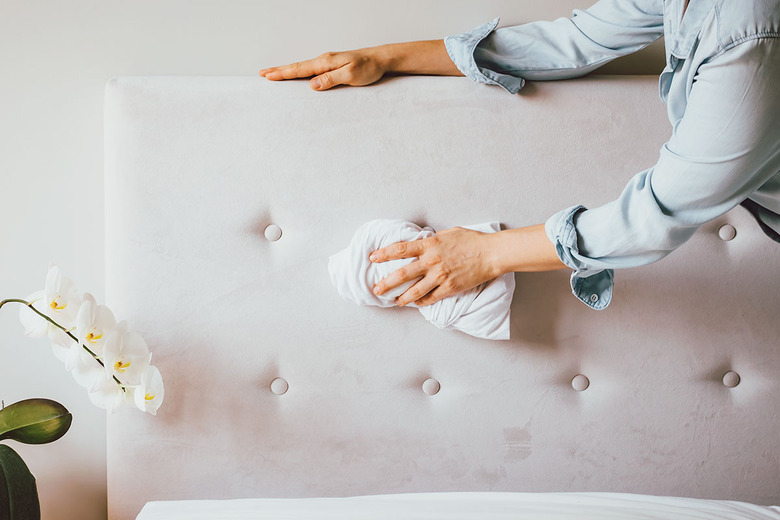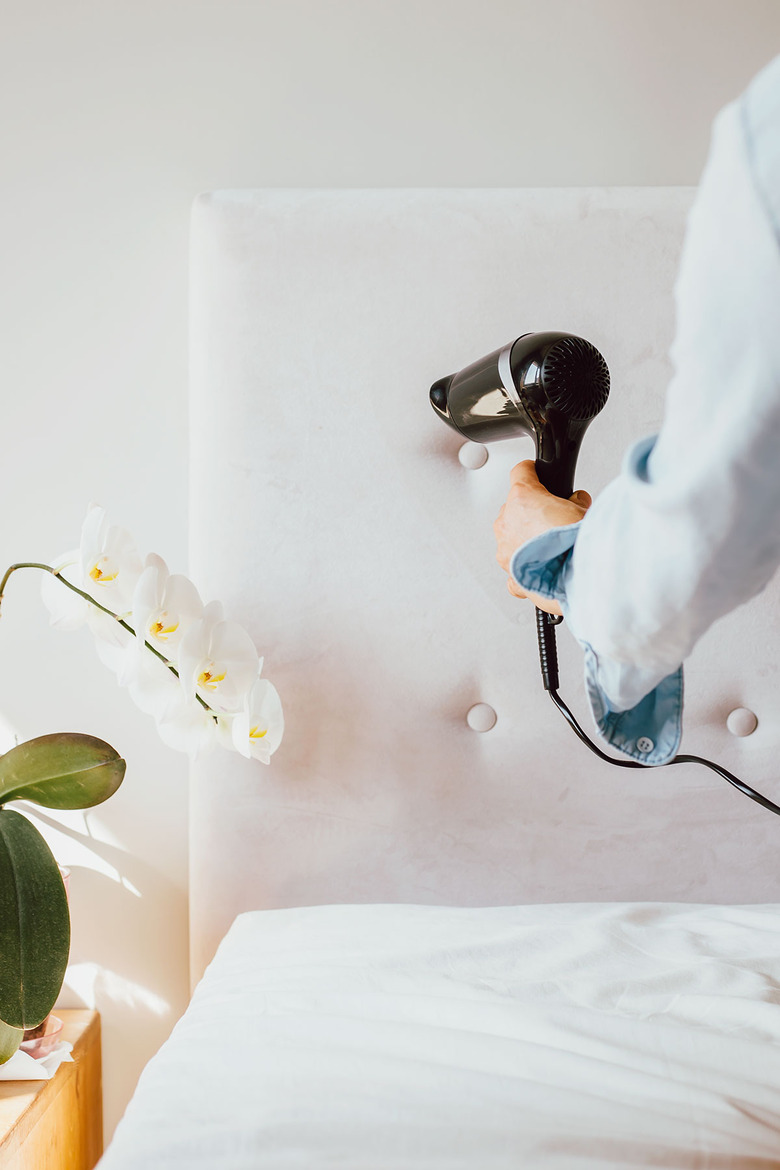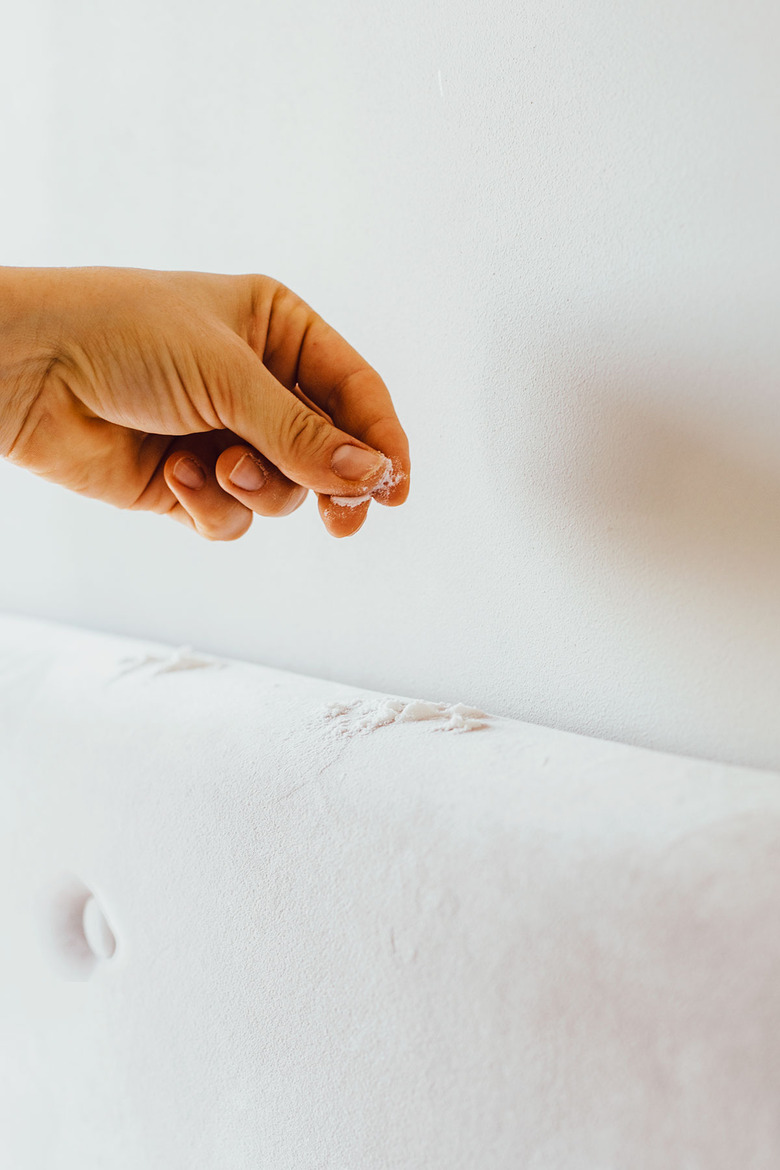How To Clean An Upholstered Headboard
We may receive a commission on purchases made from links.
Upholstered headboards add a luxurious look to a bedroom and make sitting in bed much more comfortable. But like every good thing, they come with downsides. Yes, it's going to get dirty and maybe see a few stains or spills. (Don't panic like I did over a pet bunny stain. Yes, true story. Removing a bright orange urine stain seemed impossible, and I was sure it would be there forever. Fortunately, I was wrong, and now it looks as good as new.) Cleaning an upholstered headboard isn't complicated, and you can easily tackle common stains by following these instructions.
Things Needed
-
Soft dry cloth or paper towel
-
Hair dryer (optional)
-
Water
Vacuum your headboard regularly.
Vacuum your headboard regularly.
First, it's time to add your upholstered headboard to your regular cleaning schedule. You might not think about it, but the fabric will gather dust and dirt over time so it's best to be proactive.
And it may seem obvious, but you should be a bit more gentle than usual when vacuuming your headboard to avoid damaging the fabric. Use low suction with the vacuum's arm attachment, and work left to right, top to bottom with short strokes to get any trapped dirt.
Be prepared and have a stain-fighting plan.
Be prepared and have a stain-fighting plan.
Upholstered headboards come in many different styles, and, of course, there are any number of stains that can happen. Be prepared ahead of time and have a plan (just in case) on how to attack any potential stains.
How? You'll need to know the type of fabric. Headboards come in several types of fabric, like leather, wool, linen, suede, and velvet. The best way to remove a stain will vary depending on the type of fabric.
Check your headboard for an upholstery fabric code from the manufacturer to guide you on using the right cleaner:
- S: Clean with a dry cleaning solvent only, no water.
- W: Clean with water-based solvents or upholstery cleaners.
- W/S: Both S and W, meaning it's okay to clean with both dry cleaning solvents and water-based cleaners.
- X: Avoid both water-based cleaners and solvents.
- F: Use foam cleaning, a type of dry cleaning.
If there's no code, use the general cleaning guidelines for the type of fabric the headboard is made of. For most fabrics and stains, like water spots or food spills, you can combine a small amount of mild detergent with water. Stir it up in a bowl to create a sudsy foam.
- Velvet: Use mild detergent mix.
- Linen: Use mild detergent mix.
- Suede: Use mild detergent mix.
- Leather: Use mild detergent mix, avoid excess water.
- Wool
: Steam clean.
If you actually have a stain, here's what to do...
If you actually have a stain, here's what to do...
If your vacuum has a steam clean feature, then you're in luck! You can use it to easily address the stain.
First, assess the type of stain.
Is it a water stain from leaning against it with wet hair? A liquid food spill? A grease stain? This helps you determine the best course of cleaning action.
Second, ask yourself if this is something you can handle.
If the stain is bad or you just don't feel like DIYing, contact a professional cleaner.
If the stain is liquid, immediately soak up as much of it as you can with paper towels or clean towels. Don't let the stain dry into the fabric, if possible.
For oil or grease stains: Apply baby power or baking soda to the stain and let it absorb for at least an hour. Vacuum up the excess. Apply a small amount of mild detergent mix if the stain remains. Then let it dry and vacuum again.
For dry stains that have already set: Try a fabric or upholstery stain remover. But first test in an out of the way spot to make sure it won't cause discoloration. If all looks good, apply a small amount of cleaner to the stain and wait an hour. If the stain is still there, try steam cleaning or call a professional.
Third, blot — don't scrub.
To clean a stain, grab some of the cleaner (that's right for your headboard) using something absorbent, like a clean white towel or a paper towel. Then gently blot the stain from the outer edges to the center of the stain.
It's tempting, but don't scrub the fabric. It can cause pilling or damage the fabric. Work the cleaning solution into the stain and repeat the blotting process until the stain is gone.
Fourth, let the fabric dry.
After you've removed the stain, let the fabric dry completely. Soak up any remaining liquid with a paper towel or clean towel and let it air dry. A hair dryer is handy here if you want to speed up the process.
Once you've allowed the headboard to dry, come back and vacuum up any remaining residue.
Deodorize to keep it fresh.
Baking soda is your friend for cleaning oil stains as well as deodorizing the headboard. Apply baking soda to the headboard (you can gently pat it into the fabric) and let it sit for a few hours to absorb any oils and odors. Then vacuum up the baking soda remnants. Repeat monthly.
